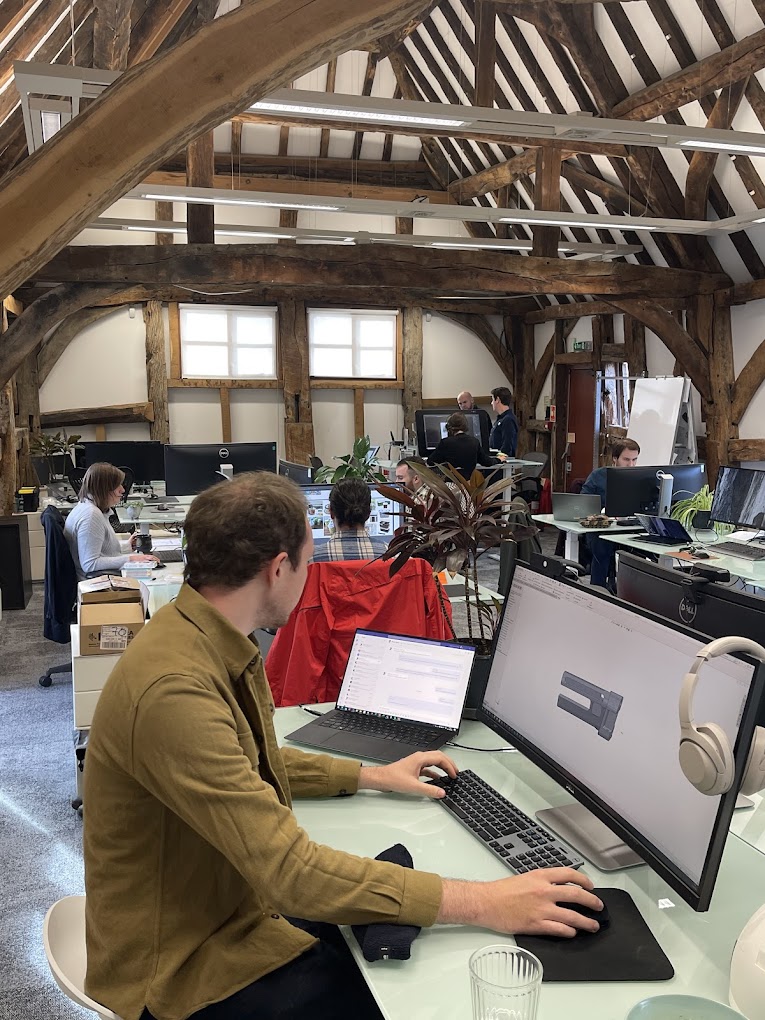
ARTICLE
Effective ways to protect your business as energy prices soar
Wholesale natural gas prices have quadrupled in the past year, and look set to rise even further this year. Here are some effective ways to build resilience through energy efficiency.
Whether you are helping run a large business or an SME, or you are running your business from home, you will likely be looking to the next few months with trepidation at the rising cost of energy bills.
You may be seeing instant and significant increases in your bills, and unlike homeowners, your business isn’t protected from increases in wholesale gas prices by the energy price cap.
Wholesale natural gas prices have quadrupled in the past year, and look set to rise even further this year due to several factors, including, but not exclusively, geopolitical tensions in Europe, and growing demand for gas from Asia.
Not to mention, we don’t have enough storage capacity to stockpile gas as a limited hedge against price fluctuations in the UK.
The rise in wholesale gas price has consequences on both gas and electricity prices, as a significant amount of electricity in the UK is produced by burning natural gas. However, as we move towards greener sources of power this dependency will likely soften.
There are no guarantees that gas markets will return to their status quo, so a sure way to protect yourself from energy price rises is simply by cutting down on the energy you use.
Here are some key areas to reduce energy consumption at your business and to improve your resilience in the face of rising energy bills.
1. Heating
Heating usually accounts for the largest proportion of an organisation’s energy use and energy spend – often up to 50%. This means it’s also an area where significant savings can be made.
Energy used on heating can usually be reduced without compromising the comfort of your staff, customers, and visitors, simply by ensuring that heating is off (or greatly reduced) when the building is not being used, e.g. overnight or during the weekend.
If you have heating controls, you should also be able to programme this to occur automatically – as well as checking the current settings or timers you have in place. As a guide, when the building is in use the ideal temperature range is between 18℃ and 21℃. When not in use heating can be completely switched off or greatly reduced to between 9℃ and 12℃.
If you’re able to make larger investments into your business, you could install a low carbon heating system, such as air source, or ground source heat pumps. Coupled with solar technology producing electricity to power the pumps, this could provide background heating at a very low running cost.
When installing a heat pump, you will need to assess the insulation quality of your building to ensure the pump performs effectively. Increasing insulation will minimize heat losses in winter, reduce heat gains in summer, improve comfort levels for users, and reduce annual energy bills by reducing heating requirements.
2. Lighting
When our team visit businesses to assess their premises, they often find old light fittings using incandescent or fluorescent lights. LED lights are more energy efficient and exist for nearly every fitting. They can reduce electricity use by up to 90% compared to other lighting.
Additionally, LEDs last up to 50,000 hours before they need to be replaced (fluorescent lights last 15,000 hours) resulting in reduced maintenance costs.
A market insight report conducted by the commercial energy auditor EEVS, found 72% of organisations surveyed had upgraded their lighting in 2021 to more energy efficient LEDs. More than 50% had also installed lighting controls such as motion sensors to reduce lighting in unoccupied spaces.
3. Behaviour
The cheapest unit of energy is the one you do not use at all. Therefore, driving smarter behaviour when it comes to energy use will reduce your energy bills too. You could start by ensuring lights, heating, and equipment are always switched off when not in use.
We often see energy-using appliances – computers, photocopiers, water coolers, fans, vending machines – that are left turned on constantly, even when there’s no one in the room or the building. Appointing an energy champion or running an employee awareness campaign can utilise the unique knowledge of your team to reduce energy waste.
Sometimes employees do not know how their heating system works and running training can allow your colleagues to use it more effectively. For example, they could turn down thermostats at the source rather than open a window which is an inefficient and costly way to manage heating and cooling in a building.
Conclusion
Improving the energy performance of our buildings – such as installing insulation, better lighting, switching to low carbon technologies and getting smart about our energy behaviour – means we use less energy overall, and our businesses are more resilient to price fluctuations.
In Oxfordshire, many organisations are benefitting from bespoke advice and support from our team of experts. Becoming more energy efficient will make your business more resilient to the challenges of the future and help you meet your long-term objectives.
If you’re interested in the opportunities for making energy improvements in your organisation, drop us an email at hello@energysolutionsoxfordshire.org – our team are always happy to have a no-obligation chat with you about the support we offer.

Thanks for reading!
Energy Solutions Oxfordshire makes it simple for every organisation to stop wasting energy, cutting running costs whilst helping to tackle climate change. Get started by filling out our online survey to get a free Desktop Diagnosis Report for your organisation.
Did you like what you read?
Then share this page with a colleague to keep the
conversation going and spark new ideas.
You might also like…

Free Energy Assessments for Cherwell SMEs

New resources for businesses to power energy efficiency

